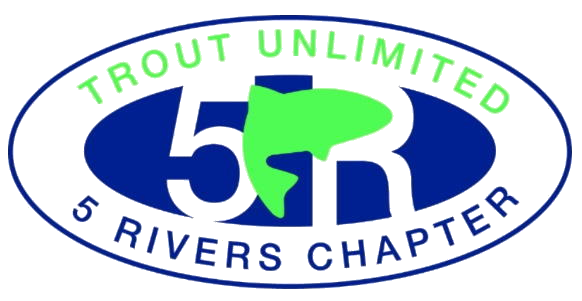basic entomology
If you’re just getting into fly fishing, figuring out which fly or bug to use can be intimidating. In fact, a basic understanding of just seven or eight fly patterns is a great start to a successful fly fishing trip. But if you want to take your fly fishing to the next level, you need at least a basic understanding of entomology - knowing the insects and understanding their aquatic life cycles and behaviors - and how it applies to fly selection.
Our goal is provide the casual or novice fisherman enough information so you can identify the family of bug and the stage that bug is in so you have a starting point when you’re on the stream. If you want a more in-depth, full-featured introduction to entomology there are plenty of other resources available.
how to determine what insects are in the river
There are several easy steps to take every time you approach as well as step into the water that can help show signs of the local inhabitants.
Look at rocks for nymphal shucks. Shake the stream side vegetation and see what flies away. Check spider webs. What do you see in them?
An easy approach is to turn over a few rocks in 4-6 different locations in moderately fast riffles, 6” to 2’ deep, with a gravel to cobble bottoms and see what’s clinging to them.
These riffles produce the majority of insects drifting in the current.
While easy, it can provide a limited and often misleading view because the nymphs most available to the fish are often the active ones.
The most effective approach is to hold a net and catch anything floating on the surface of the water or hold the net underwater and kick up the substrate upstream of the net. The current will wash any dislodged insects into the net.
There are obviously dozens of patterns that can imitate nymphs. Once you’ve come back from a stream with a general idea of what you’ve seen, talk to a fly shop to see what they recommend.
identifying bugs based on flight patterns
One of the first things you can do - even before you start fishing - is to observe bugs flying around or over a stream. The flight patterns of the three major orders of aquatic insects–mayflies, caddisflies, and stoneflies–are distinctive.
Mayfly
The dominant movement of the mayfly in motion is an even, steep to gently rolling, up and down flight. Adults move back and forth across the water in a wave-like pattern. Think of bobbing your head up and down.
Caddis
When you see caddis flying, think of second graders with unrestricted access to chocolate and Mountain Dew. They spiral and bounce, cork-screw and dive in a sporadic flight pattern.
Stonefly
The B-52 bombers of the trout stream. Stoneflies are fairly weak fliers and are conspicuous by their size. They don’t waste energy dancing or twirling like other insect, but push straight forward.
Sources: AscentFlyFishing.com; Orvis.com
major aquatic insects in southwest colorado
Mayfly
Mayflies have an incomplete metamorphosis meaning they pass through egg, nymph and adult stages.
The majority of their life cycle is spent in the nymphal form.
Mayflies occur in both flowing and still waters, but their greatest diversity and abundance occurs in streams.
Classification is more important with nymphs but less so with adults where matching size and color is more important.
Mayflies are classified into four groups: clingers, crawlers, swimmers and burrowers. The groups are based on the behavior of the nymphs.
Crawlers have a head equal to, or less than, the width of the abdomen and have a slightly flattened body for crawling along the bottom in medium to fast water. Crawler nymph have eyes on the sides of its head, a key crawler vs. clinger differentiator. They always have 3 tails.
Clingers have a head wider than the abdomen and a wide, flattened body and are found almost exclusively in the fastest water and are seldom available to feeding trout.
Swimming nymphs are slim, streamlined and shaped like a torpedo and have tails where the edges are fringed with fine hair. They are active with a long abdomens that wiggle up and down as they swim through the water. The fly imitating the swimming nymph can be weighted to fish on or near the bottom, or without weight to fish in the surface film. It can be fished in a dead drift but also with some action to mimic their swimming motion.
Burrowing nymphs have an oval, long-shaped body with fringed gills and very visible tusk-like mandibles for digging into silt and debris on a steam’s bottom.
Mayfly Adults
Think of little sailboats floating on the water. The dun has upright wings, a long slender body and two or three long tails. They will float on the water until their wings are dry at which point they fly to nearby vegetation.
Nymphing Tips
Think of matching the fly to the appearance of the nymph. Mayflies that are blocky like crawlers and clingers can be imitated with a fly with a similar build, such as a Hares Ear. Similarly, swimmer nymphs - like Blue-Winged Olives - that are slim and streamlined in appearance are best matched with an imitation like a Pheasant Tail.
Dry Fly Tips
If you see mayflies on the surface, think size first.
Caddis
Unlike mayflies, caddisflies have a complete metamorphosis, which includes a pupal stage. Caddis live under water as wormlike larvae. They take one of two forms - cased, which create “homes” of sand and pebbles, sticks and stones, and free-living without cases.
When emerging, the pupae burst towards the surface. Some drift in the current while others pop quickly to the surface.










